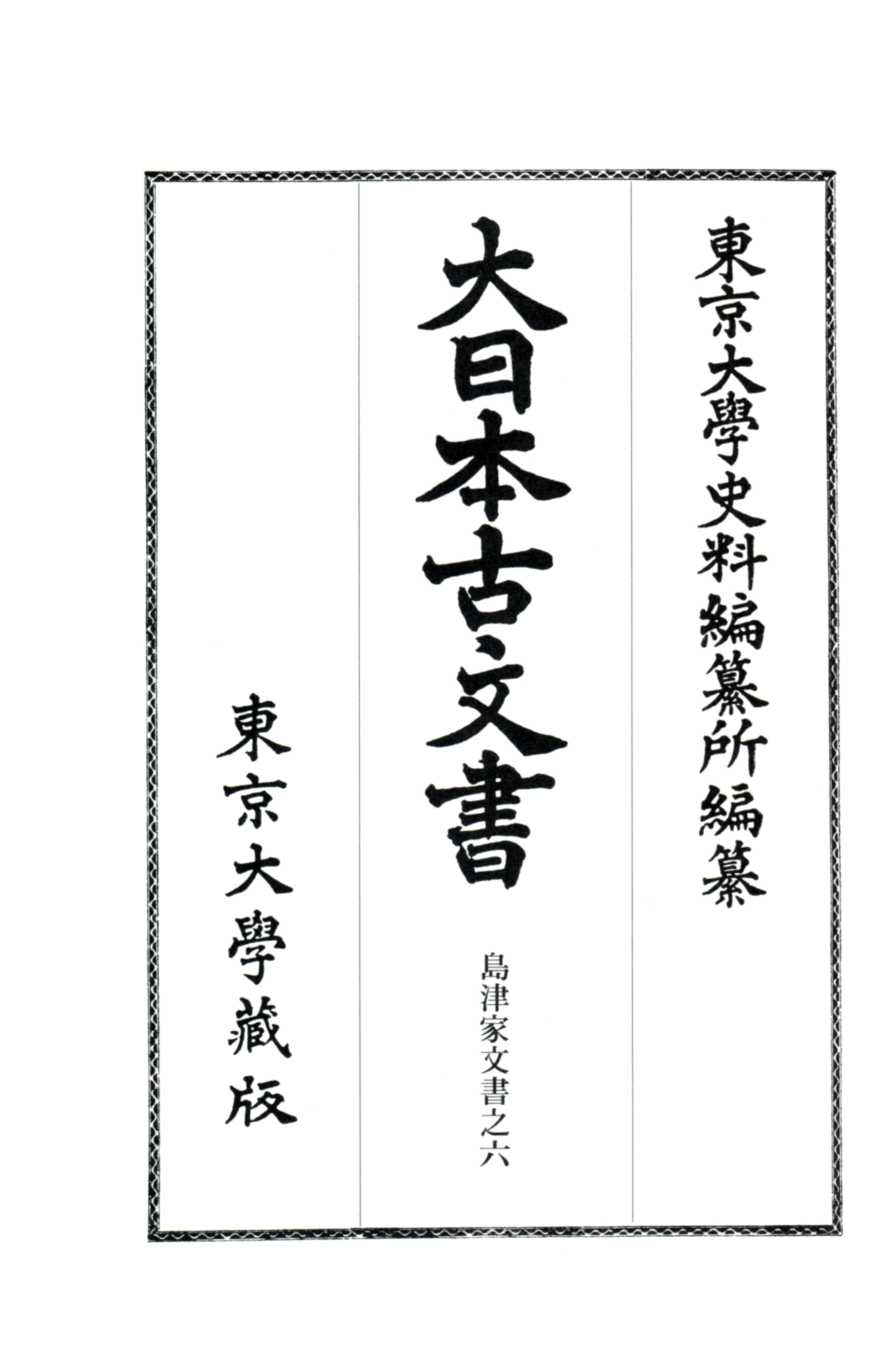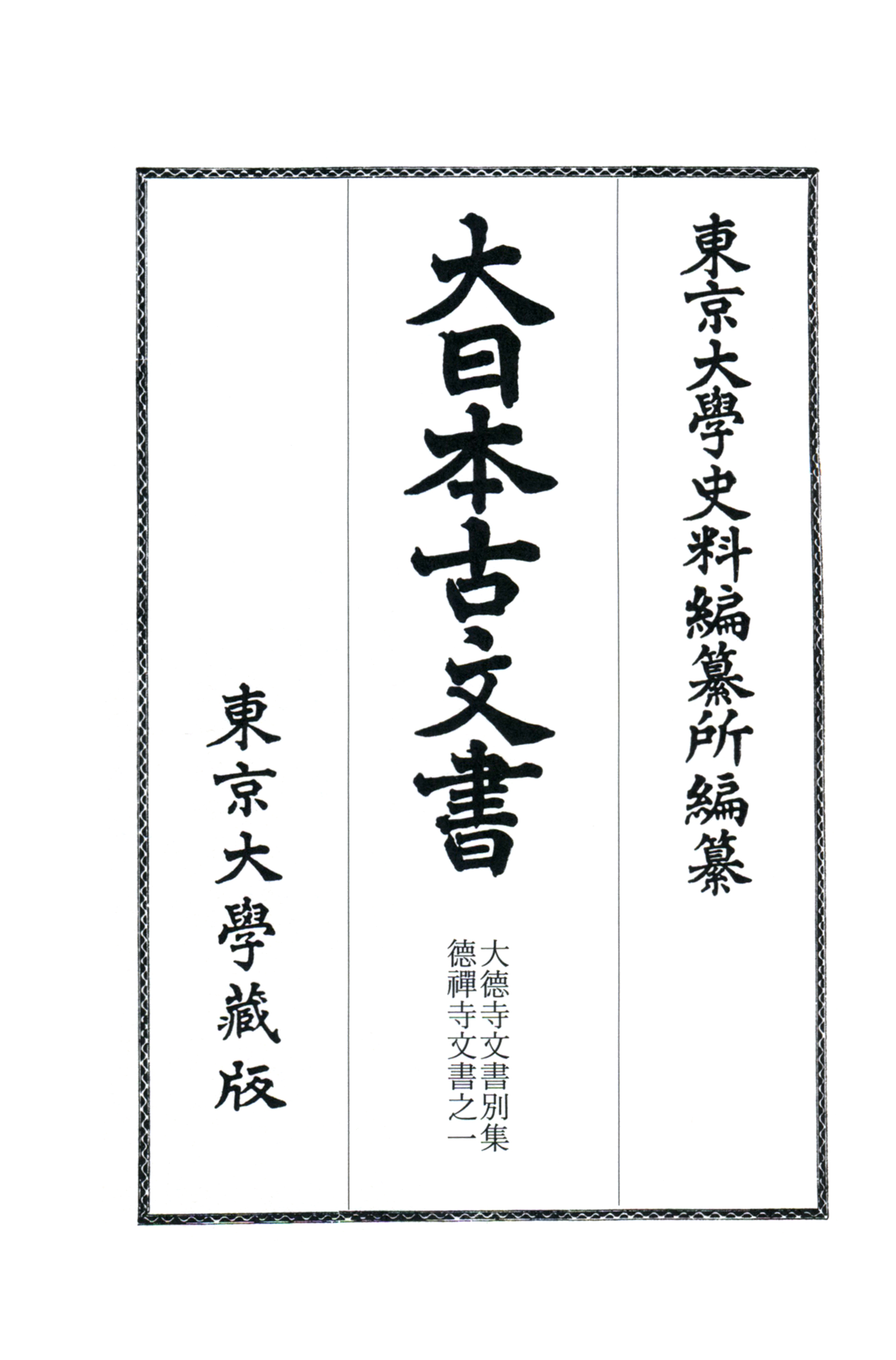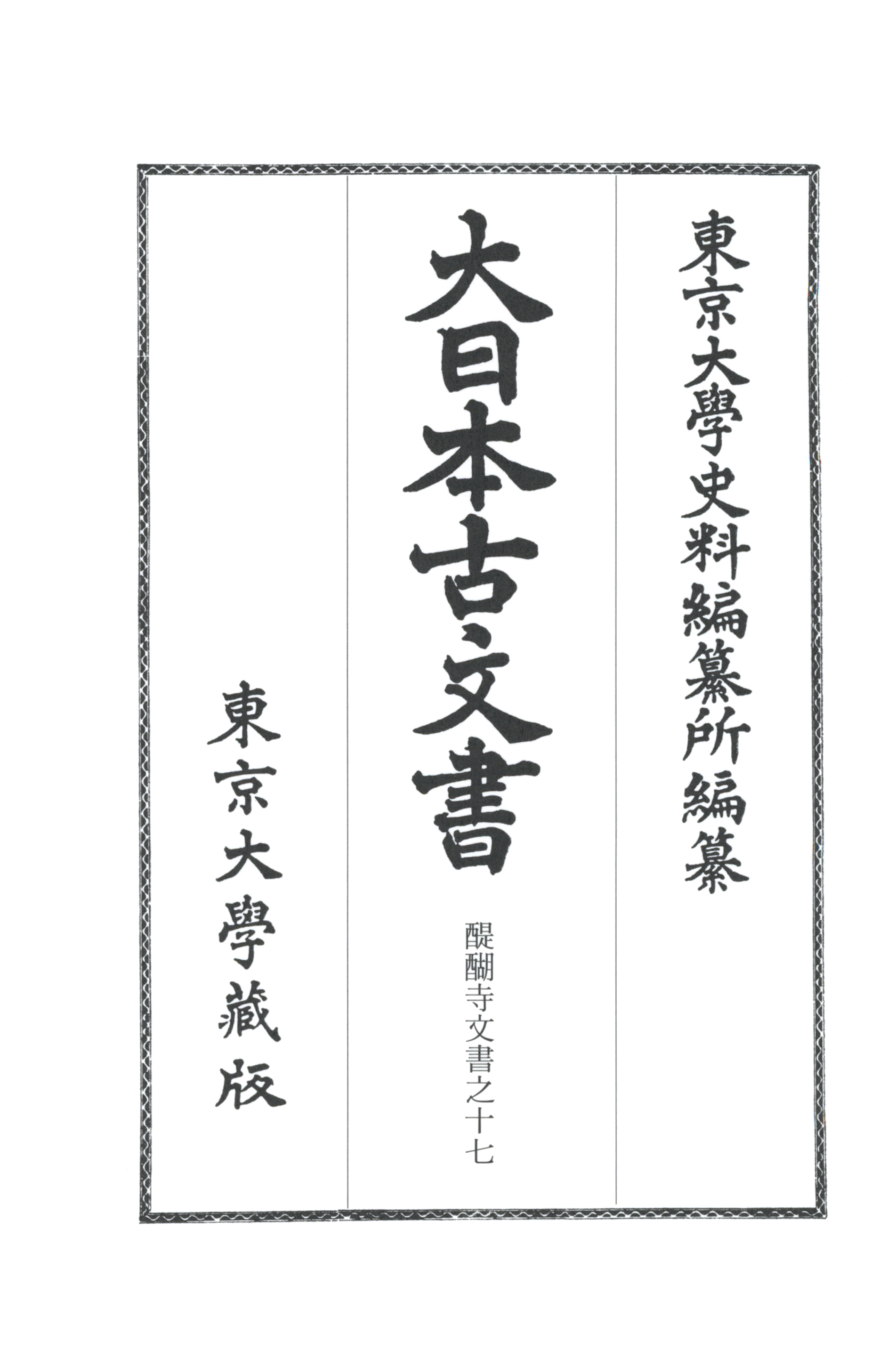
Title
Dai-Nihon Komonjo Iewake dai 18, Todaiji Monjo 24 (Old Documents of Japan: Temple and Family Collections #18: Tōdaiji Documents 24)
Size
396 pages, A5 format
Language
Japanese
Released
April 24, 2020
ISBN
978-4-13-091195-5
Published by
University of Tokyo Press
Book Info
See Book Availability at Library
Japanese Page
Old Documents of Japan is a series made up of volumes that transcribe old documents, centred on documents of the medieval period, that belonged to temples, shrines, and former warrior families with large holdings of such documents. The present volume deals with the more than 10,000 documents preserved by the temple Tōdaiji in Nara, famous for its Great Buddha. This project, which began with the publication of vol. 1 in 1944, has continued for seventy-six years to reach vol. 24 with the publication of this volume.
During the medieval period, Tōdaiji’s economic base lay primarily in landed estates (shōen) in the Chūbu, Kinki, and San’yō regions, and the relevant documents have been used as material for studying medieval landed estates. There is also a wealth of material related to the management of an organization like a temple (e.g., materials on the running of religious services), and these documents are also valuable as material for studying one type of organization during the medieval period.
The number of documents (more than 10,000) is appealing as source material, but at the same time there is also a great problem with them, namely, the large number of drafts and internal documents that can be understood only by those directly involved in the matters discussed in them. Many of the latter, in particular, are undated. Further, in the case of Tōdaiji, its activities were managed by several internal organizations, and the documents were originally kept by each organization, but in the Edo and Meiji periods they were all gathered together and rearranged, and owing to the resultant confusion the original provenance of many documents is unclear. There are also many multi-page documents that have become separated into individual pages, which have thus turned into fragments. During the Meiji era and later, some documents also found their way outside the temple, and the University of Tokyo holds some of these documents.
Tōdaiji Documents treats each document as a “relic” and attempts to clarify its original provenance by analyzing its contents and comparing it with other associated “relic.” In many cases “relics” that have become separated have been joined together and restored to their original form. For example, there are some documents recording exchanges about the settlement of the annual land tax with the person in charge of Tōdaiji’s landholdings in present-day Hōfu in Yamaguchi prefecture, dating from 1598, when Toyotomi Hideyoshi died. There were originally eleven sheets, but they became unglued and were separated into seven lots, which we were able to restore to their original form, thereby shedding light on aspects of everyday contacts between landlords and local inhabitants.
Unfortunately, it is impossible to explain the significance and appeal of Tōdaiji Documents by taking up just this one volume, for this series is to a strong extent an interim report on the cataloguing of a vast number of “relics” that had been left in a state of disarray. To supplement this series, the Historiographical Institute has made public two databases, “Union Catalogue of Old Documents of Japan” and “Full-Text Database of Old Documents” (https://wwwap.hi.u-tokyo.ac.jp/ships/). These cover what has been published to date and everything to be taken up in the future, and by making full use of these databases researchers should notice many things that they would not be able to notice by using only the published volumes.
Although the documents included in Old Documents of Japan are not written in cursive style, skill is still required to read these old documents. It is a collection of historical sources that is difficult for beginners to approach, but starting from the present volume, efforts are being made to improve matters by writing the explanatory sections in a contemporary style. For the individual contents of the present volume, reference can be made to the following webpage: http://www.hi.u-tokyo.ac.jp/personal/endo/index.html.
(Written by ENDO Motoo, Professor, Historiographical Institute / 2020)



 Find a book
Find a book





